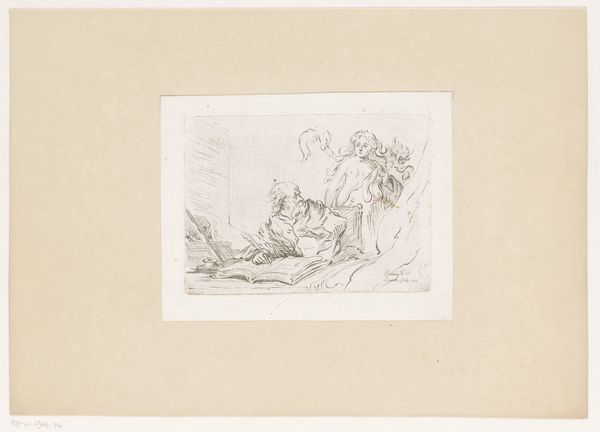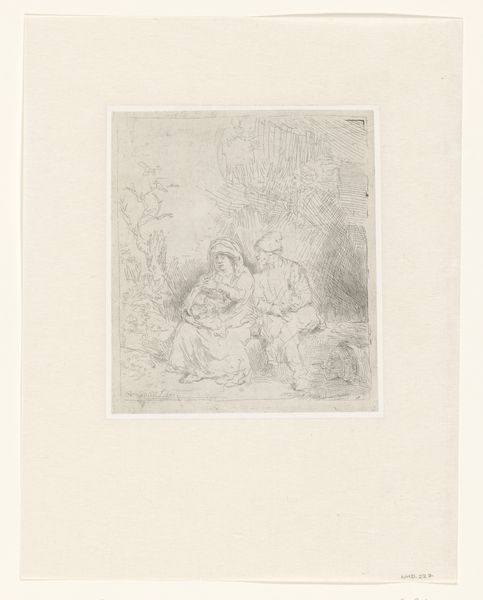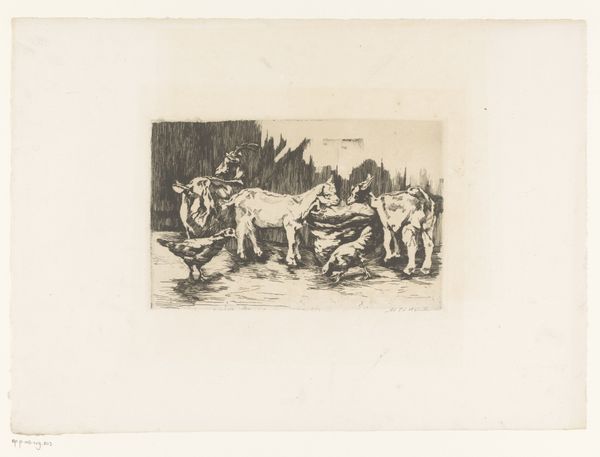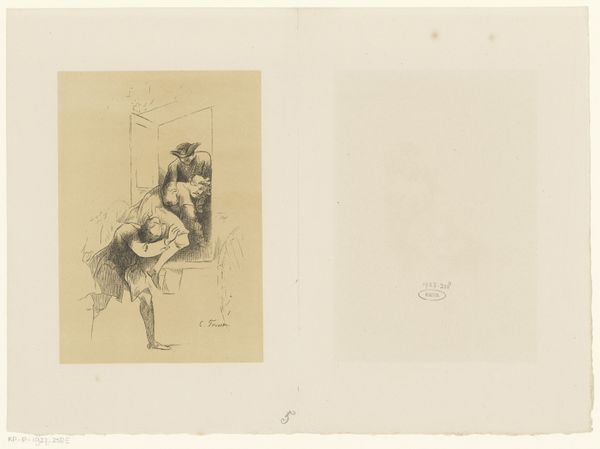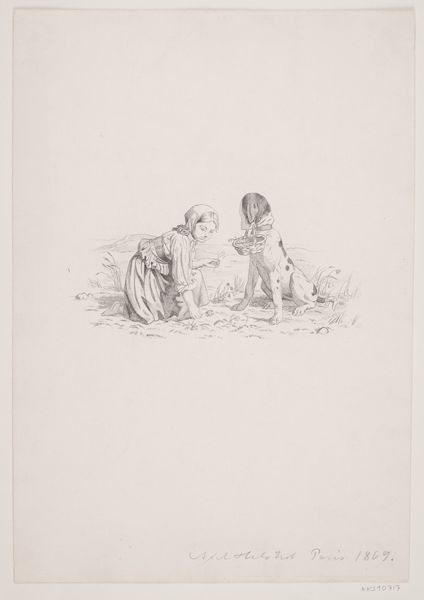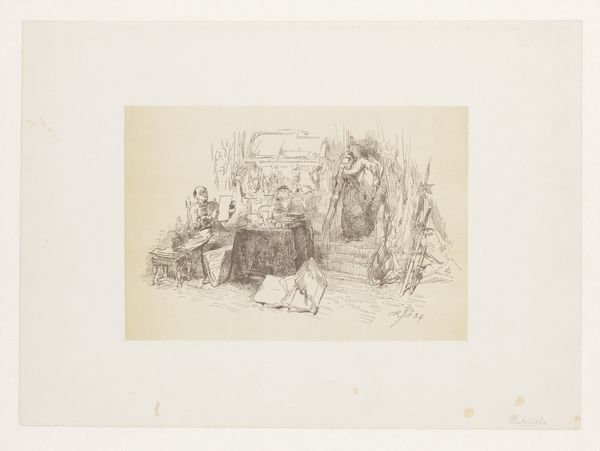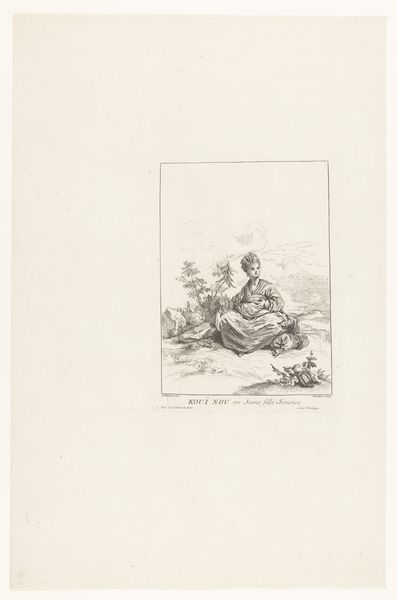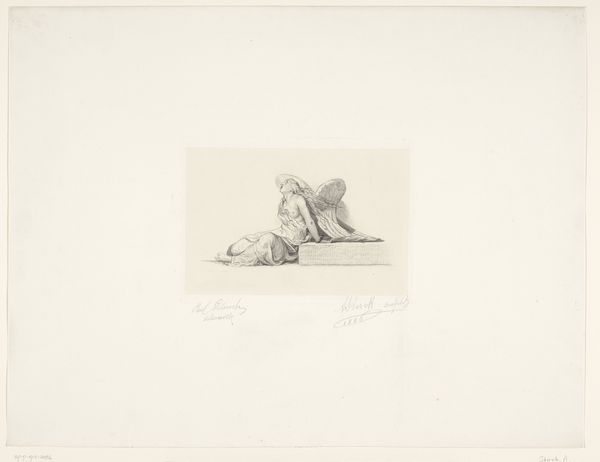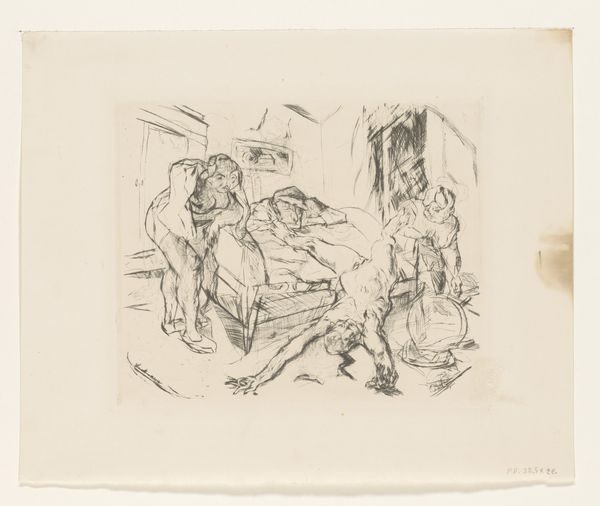
drawing, paper, pencil
#
drawing
#
allegory
#
pencil sketch
#
figuration
#
paper
#
pencil
#
sketchbook drawing
#
academic-art
Dimensions: height 117 mm, width 171 mm
Copyright: Rijks Museum: Open Domain
Curator: Allow me to introduce "Four Putti by a Block," a drawing attributed to François Courboin, created sometime between 1875 and 1907. It’s a delicate work, rendered in pencil on paper. Editor: It strikes me as… playful. Almost theatrical. The cherubic figures seem poised to present something. It's hard to put my finger on what emotion it evokes other than a childlike hope. Curator: The composition is certainly intriguing. The central block, stark and undefined, creates a focal point for the putti. Their activities– reading, writing, lounging – frame this central void. Symbolically, the putti, these youthful winged figures, represent divine love. Considering the historical context, in late 19th century art, there was an artistic preference towards idealizing scenes and allegory, even using classic artistic tools like figure drawing to tell us something. Editor: So you think there is no intent of communicating an alternative viewpoint than a very traditional understanding of love and symbolism? Curator: Possibly, but let's consider this. It would have been created against the backdrop of social changes in art such as modernism. Even while there's an artistic choice to draw in pencil, as if quickly made, using paper and choosing children figures from a long Western tradition, it looks like he wants to ask something of its viewer, doesn’t it? The art feels somewhat unsettling because of the lack of a message within it. The empty block asks us if these cherubs are staging the possibility of a traditional morality as the world shifts under their very small feet. Editor: So in your perspective, the blank space isn't about nothing but everything? Curator: Exactly! Perhaps the "block" symbolizes untapped potential, the void that love and creation can fill. The children's actions give us space to wonder: can a message still come out? Or did something come out already? Editor: That's a compelling point. It definitely prompts questions about the power of suggestion. The undefined invites us to project meaning. Curator: It’s also noteworthy how academic traditions still affect the language of our own symbolism. This can happen often in works found at places like the Rijksmuseum, the history and contemporary reflection that places like these can offer us. Editor: Yes! The drawing stays with me. Thank you. Curator: My pleasure! It's a joy to unravel such layers together.
Comments
No comments
Be the first to comment and join the conversation on the ultimate creative platform.
